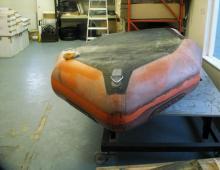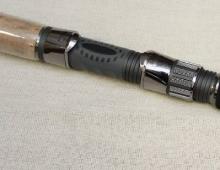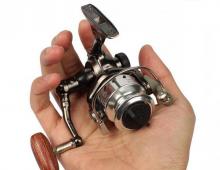Tuning a PVC inflatable boat for fishing with your own hands - options and practical tips
If you look at the available reviews of fishermen about PVC boats, then the general conclusion is that it is an excellent swimming facility, but in terms of functionality, convenience and safety it leaves much to be desired. Experienced fishermen will certainly modify the boat, taking into account the peculiarities of its further operation. Moreover, PVC boat tuning is done mainly with their own hands, thereby maximally adapting the purchased model for fishing, “for themselves”.
Further - only options for tuning PVC boats, which are most often implemented. But this does not mean a priori that there are no others. If you understand the meaning of all technological operations and the feasibility of their implementation in one case or another, then it will not be difficult to transform a swimming facility with your own hands. Moreover, according to their own requests, taking into account all the specifics of fishing and priorities.
It should be correctly understood that “with your own hands” does not mean literally everything, by yourself and from scratch. Separate elements (parts) for tuning, if the price is acceptable, you can buy ready-made. In any case, it will be much cheaper than responding to the suggestions of specialists (and stores do them) and paying for something that you can do yourself.
Improved wear resistance
It is believed that the strengthening of the structure of a PVC boat, which implies an increase in the reliability of its bottom and lower part of the sidewalls (cylinder), is carried out only if it is used in extreme conditions. However, experienced fishermen always do such tuning, regardless of the fishing conditions - on rapids or in still water. Even on a seemingly familiar pond, you can run into the same snag, previously unnoticed. That is, the risk of damage to the boat while fishing is always quite high.
In addition, it is advisable to reinforce the lower part and sides of the PVC boat to increase the bearing capacity of structural elements (more reliable engine mounting and for other purposes).
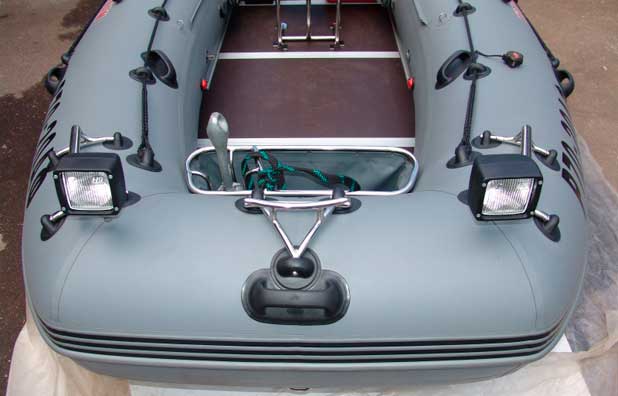
bottom reinforcement
Procedure:
- The PVC boat is inflated and turned upside down.
- The surface is cleaned (in the event that the watercraft has already been operated). As a rule, fishermen limit themselves to washing it, after which the additionally treated area is wiped with a rag.
- Measurements are being taken. Here one should be guided by the principle of sufficiency, based on the dimensions of the boat and the specifics of its use. Some fishermen glue parallel strips of commercially available PVC profiles (or rubberized fabric) to its bottom, others fix a membrane (patch) or individual pieces of waterproof materials over its entire surface. In any case, the wear resistance and strength of the bottom of the boat (at break) are significantly increased.
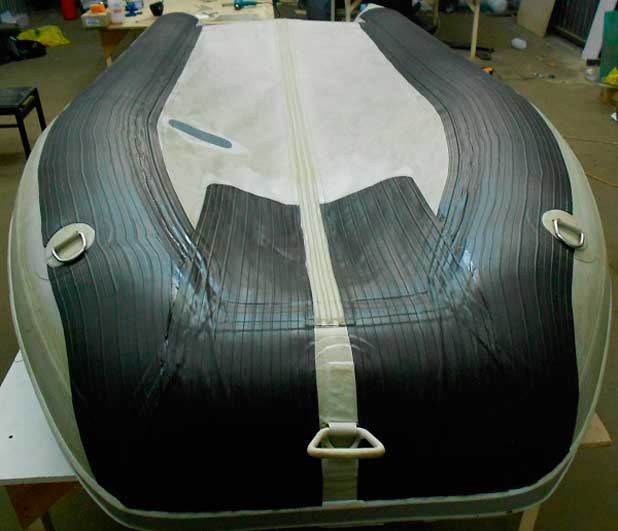
- The necessary fragments are made according to the measurements taken.
- The air from the boat descends, and it unfolds in a specially selected place. Since in the process of gluing the cut-out PVC strips (or membranes) they will have to be smoothed out, fixing them on the base, the surface must be even and rigid.
- Boat degreasing. At this stage, first (if necessary) the removal of microscopic solid fractions from its bottom is performed, and then it is treated with an appropriate agent. It must not react with the materials (PVC of the boat and selected for gluing). As a rule, fishermen use white spirit or gasoline for degreasing. If there is nothing at hand, except for acetone, then you can use them. Only carefully, in small doses.
- Laying cut-out fragments, their alignment on the bottom. This is just an example. It will immediately become clear whether everything has been done in the preparation process correctly. Perhaps the cut will have to be adjusted.
- Applying glue in the right places, and again - on top of the patch or strip.
- Next - heating the place of application of the strips (membrane) with a building hair dryer, followed by their rolling with a hard and at the same time sufficiently elastic roller. Whether to heat treat or not depends on the type of adhesive. But it is necessary to press down (you can use a home-made "skating rink", which is easy to make, or take a glass bottle for this purpose). Particular attention is paid to the removal of air from under the bands. Otherwise, in places where bubbles form, the material will gradually peel off. So, at the slightest hook, it will easily break off.
It should be noted that such tuning significantly increases the mass of the PVC boat. If you stick the membrane all over the bottom, then at least 7-8 kilograms. Experienced fishermen advise paying attention only to those areas that are most susceptible to abrasion. In this case, one speaks of "partial booking". That is, tuning (refinement, improvement) is done only on individual segments of the PVC boat.
The adhesive is applied in at least 2 layers. The first, after 10-15 minutes the second. This improves the quality of fixation of the used part on the base (PVC).
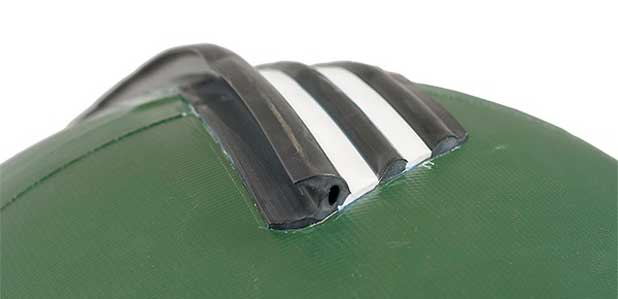
Strengthening the bottom and other structural parts of the PVC boat is convenient to do with a special tape, which is called a fender or profile. Sold in thicknesses from 0.1 to 0.3 and widths from 6 to 24 (cm). Such parts are fixed with a two-component adhesive. They are available in two versions - halts with a chipper and regular ones. There is a choice.
Balloon reinforcement
The technology is basically identical to the method described above. The only difference is that the boat does not need to be blown off. The same PVC halts are used. As already noted, they have different linear parameters and are usually sold according to the dimensions of a particular PVC boat model, but this is not important. If their size is slightly larger, then trimming is easy. The main thing is that the values \u200b\u200bare not less than required. But if the meaning of all the work is clear, they can be made with your own hands, from the same material that was used to strengthen the bottom.
In addition, the keel and transom of the PVC boat are subject to reinforcement.
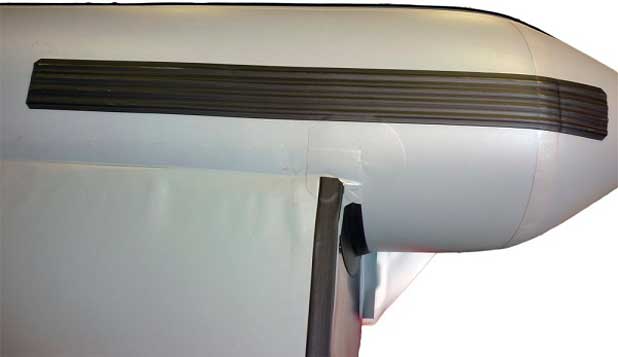
Installation of the anchor eye
The place is food. A little lower (seen in the photo) is a roller that prevents abrasion of the PVC material of the boat with a cable.
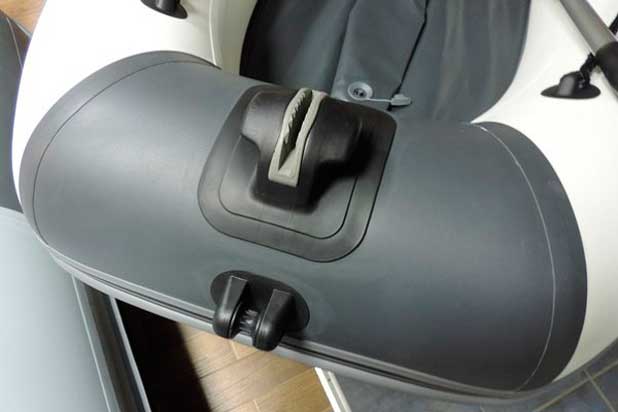
Seam sealing
Not many people buy branded PVC boats for fishing. Most focus on cheaper models. Do-it-yourself additional sealing can also be turned into a kind of tuning and literally “decorate” the watercraft with decorative stripes, segments, giving it a unique look.
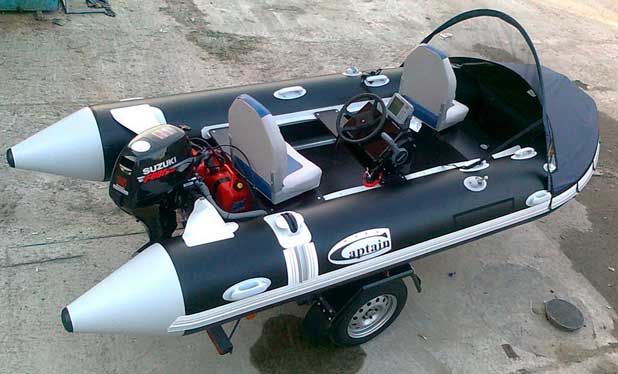
Installing stringers
It is done if the fisherman has equipped a hard floor in the boat. The duralumin profiles used for such tuning (or corners, depending on the thickness of the floorboard) prevent increased abrasion of the PVC material. Stringers are mounted only on straight sections. So, where the geometry of the boat changes (in places of curvature) they are not needed.
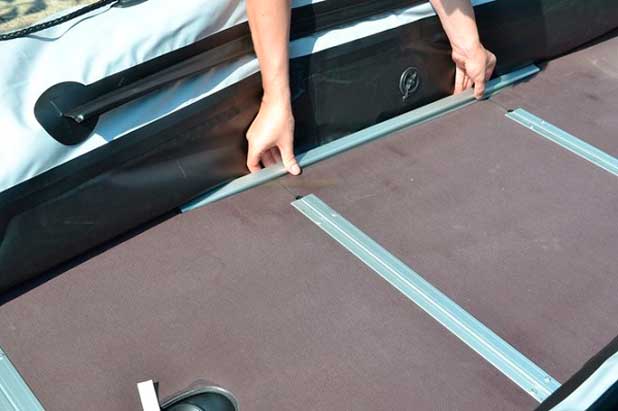
Installing redans
Such tuning is done only for PVC boats with an engine. Special profiles made of the same material (the section is selected individually) increase the stability of the craft, and also facilitate its entry into planing.
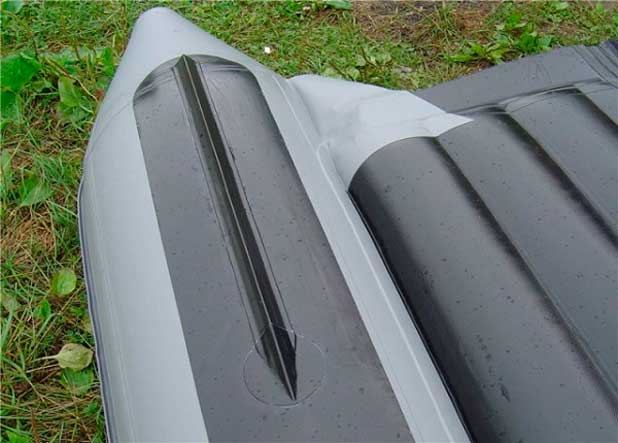
Installing rod holders
Extremely useful tuning, especially when fishing is carried out simultaneously by several means. For example, spinning and wire rod. For this, pieces of PVC pipe of a suitable diameter are used.
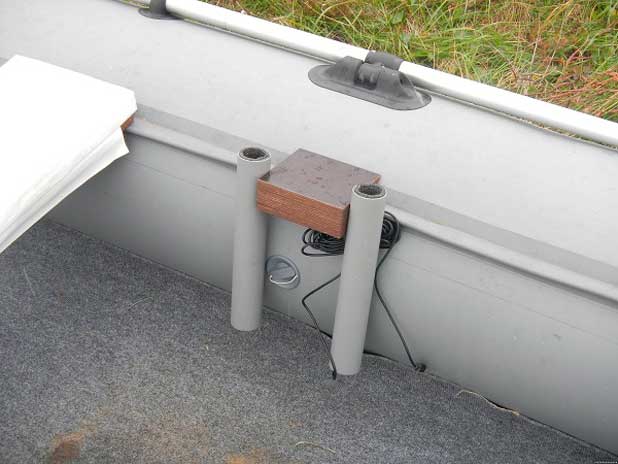
What other boat tuning ideas are there
If you look through all the information on this topic (on sites, forums), then there are enough options for tuning a PVC boat. The fantasies of fishermen are so diverse that, as they say, the advice is "innumerable." Much depends on whether the boat is new or used, what was its original configuration (model), the size of the boat, fishing conditions, the specifics of use (single fishing or group fishing), and so on.
- Sensor. This is for separate (stationary) echo sounders. The place is on the transom. If it is not provided in the basic configuration, you will have to do it yourself.
- Transom wheels. With them, it is convenient to launch a PVC boat in some places. For example, if the coast is steep, but there are no assistants to carry it in their arms.
- Inflatable keel. Increases the stability of the boat. It is advisable if you have to fish far from the coast. After such tuning, the watercraft keeps well even on a big wave.
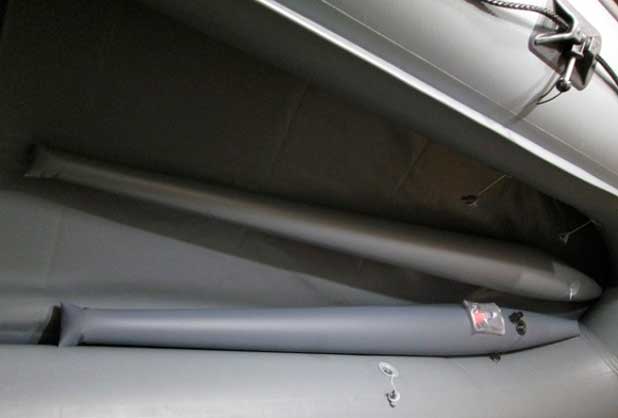
The list can be continued indefinitely. How many fishermen in the world, so many options for tuning a PVC boat.
- Awning.
- Seats (movable, soft, raised, and so on).
- Engine insurance.
- Table.
- Crossbar (for trolling).
- Hard floor (plastic, multilayer plywood).
- Additional elements of fasteners (things, anchors, gas tank).
- Hiking bags.
- Trolley (to move the PVC boat over a distance).
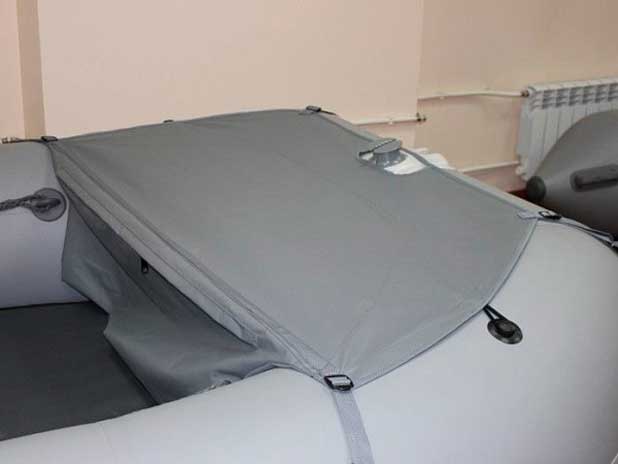
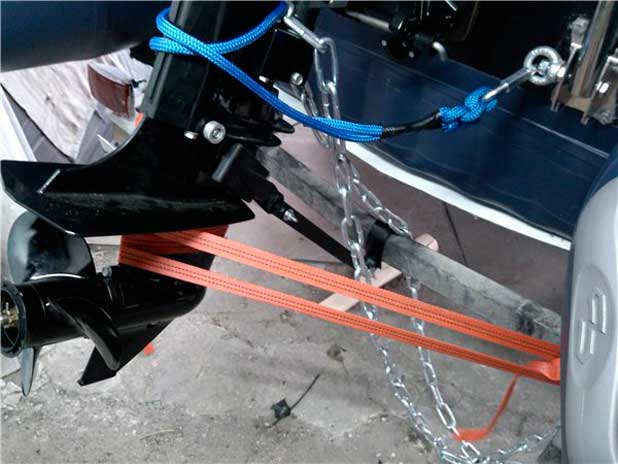
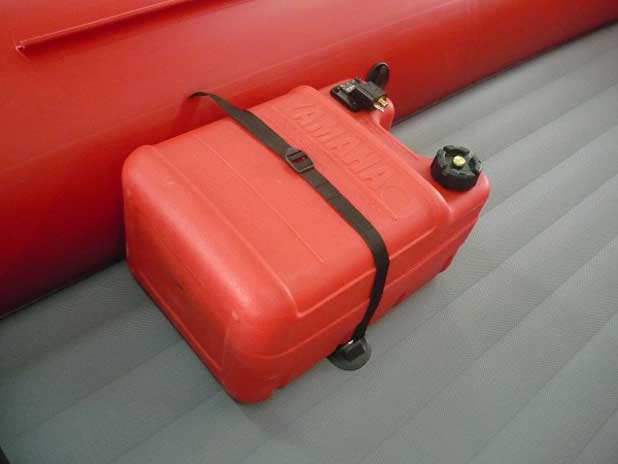
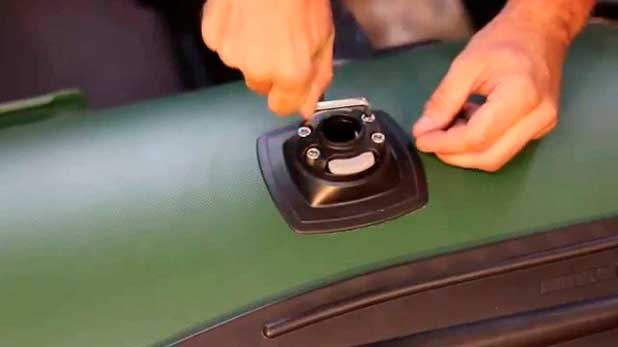
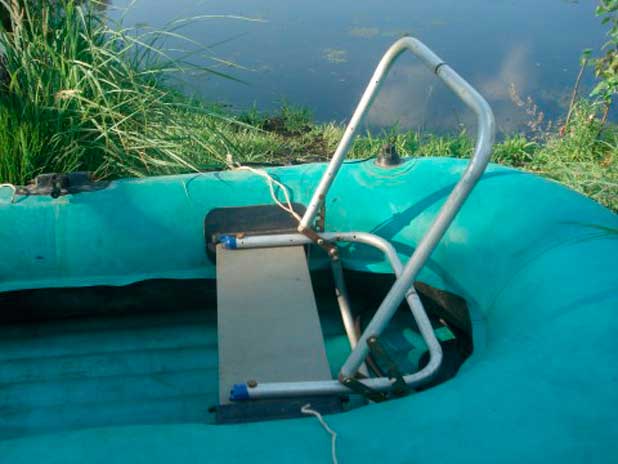
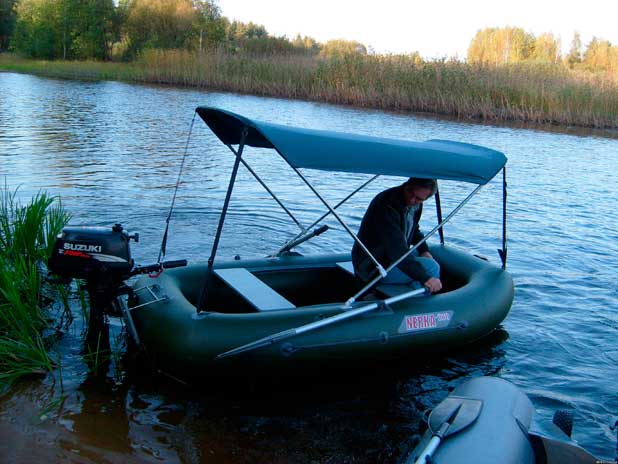
Everything needs a measure. Various excesses, even if something seems to be “cool” tuning to someone, fishing often becomes a serious hindrance. If you overdo it in your zeal, then it is possible that the mobility of the PVC boat, its stability on the water, will sharply decrease. And this is only part of the troubles that may arise when going out into nature. Yes, and the extra weight of the boat is definitely not a plus.
Therefore, no matter how attractive it may look in a photo, in TV shows, with another fisherman, you should think carefully - but do I really need it?
Good ideas and success in transforming your PVC boat. But most importantly - do not forget about the reasonable limits of tuning!

